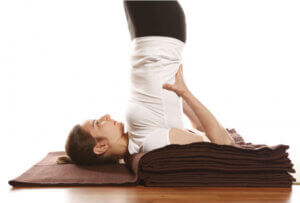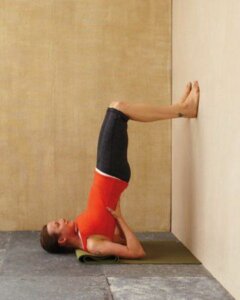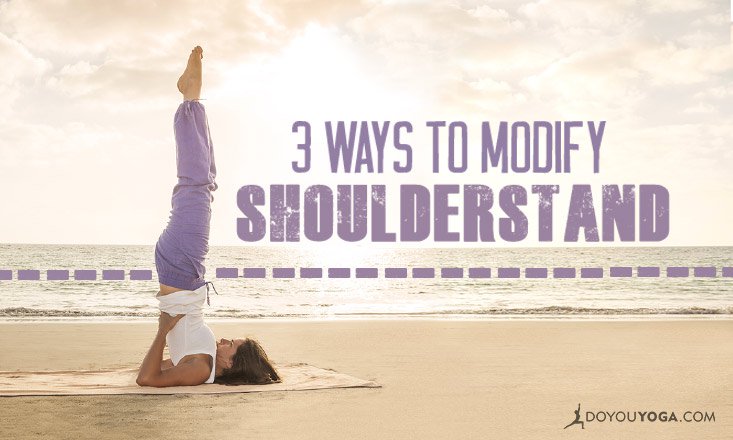Supported Shoulderstand, or Salamba Sarvangasana, is an inversion that comes with many benefits. It stretches the back of the neck, strengthens the spine, improves the circulation, improves digestion, and calms the mind. But it’s not always the easiest or most comfortable asana in the book!
Luckily there are many modifications to consider which will make Shoulderstand a bit more accessible. Below, you will find three ways to modify Shoulderstand to ease your way into it.
Before we continue, please note that if you have neck injuries, headache, diarrhea, or are menstruating at the moment, it’s best to avoid this pose. You can exchange the pose with Viparita Karani, Legs up the Wall. Also, never turn your head while in the pose. If you have to modify yourself, come down to do it.
1. Folded Blankets

Fold the blankets so that the folded edge will be under your shoulders. You can also use towels stacked on top of each other, and use another towel or yoga towel to keep the pile firmly together.
When getting into the pose, start with your shoulders a few inches from the edge of the blanket, because when you come up, your shoulders will roll closer to the edge.
2. Using a Block

Keep 1-2 blocks within reach before you come to lay on the floor. You can keep the blankets under your upper back, so that your head and neck are again off the mat, and your shoulders are aligning with the edge of the blanket. Bend your knees and place the bottoms of the feet near your hips. With an inhale, lift your hips up towards a Bridge Pose, and slide the blocks under your sacrum.
You can use a block on its flattest, lowest side, which gives the biggest surface area for support, and is therefore most stable. You can do this with one or two blocks, depending on how much you want to elevate the hips.
Once you find a good spot for the block, raise one leg up at a time towards the ceiling. Roll your shoulders under and interlace the fingers, if you can.
3. Using a Wall for Support

Start in Viparita Karani, take the short end of the mat to the wall, sit sideways towards the wall, and slowly bring your legs up the wall with your torso on the mat. Bend your knees slightly, and bring the bottoms of the feet onto the wall. Your hands are next to you, palms facing down.
With an inhale, root your hands down, press your feet onto the wall and start to lift up your hips. You might have to experiment a few times to find the perfect spot for your feet, but never adjust while in the pose. Always lower your hips down, adjust the feet, and come back up again. Roll the shoulders under to give more space for the chest to come closer to the chin.
If you feel comfortable, lift one leg up towards the ceiling at a time. Stay in the pose for 4-6 breaths, and slowly come back down.
Start where you feel comfortable today, and slowly progress from there. If you are a complete beginner, it’s always good to start the practice with a teacher before continuing your practice at home.


